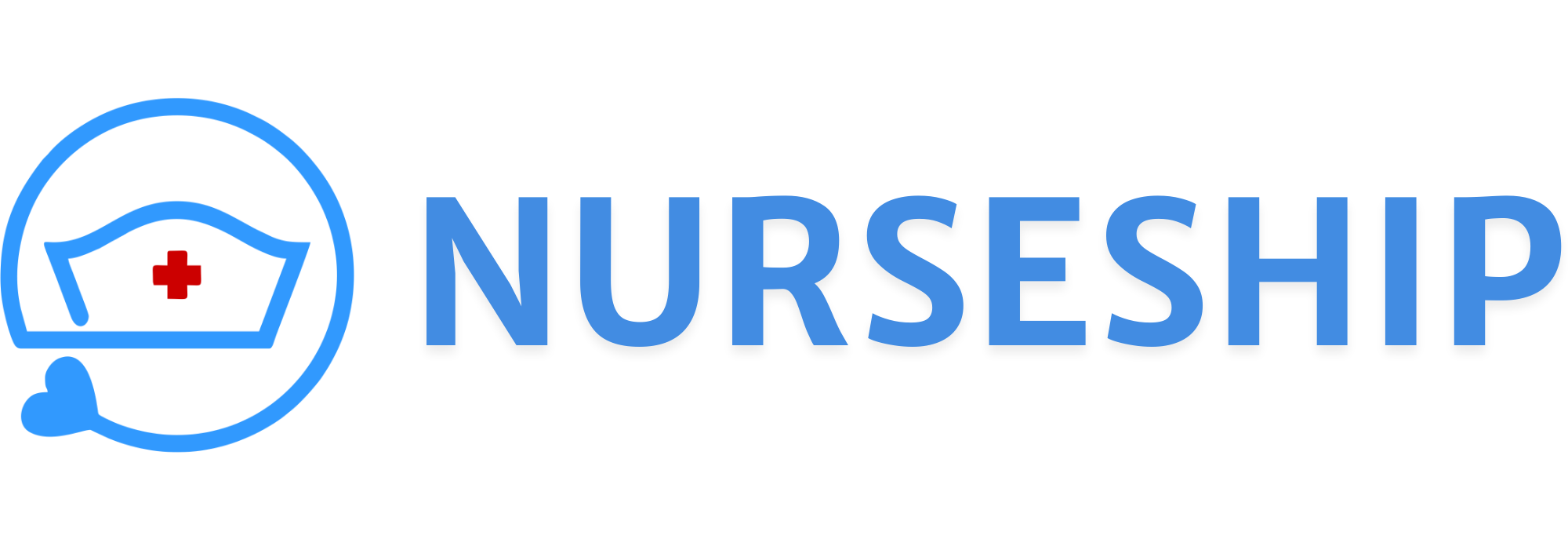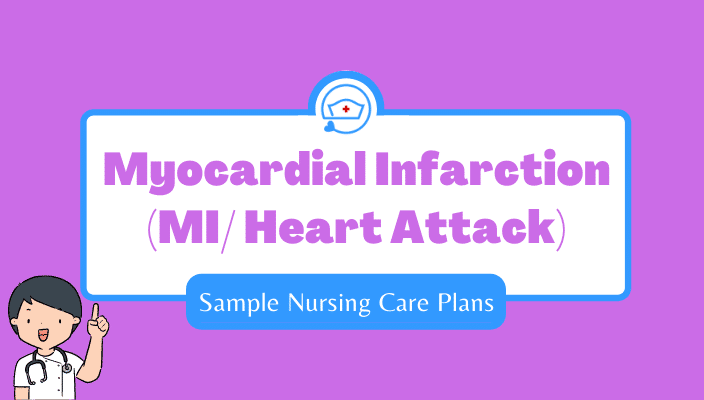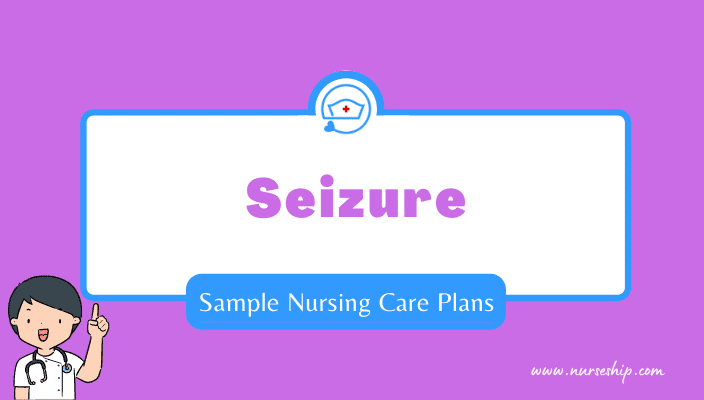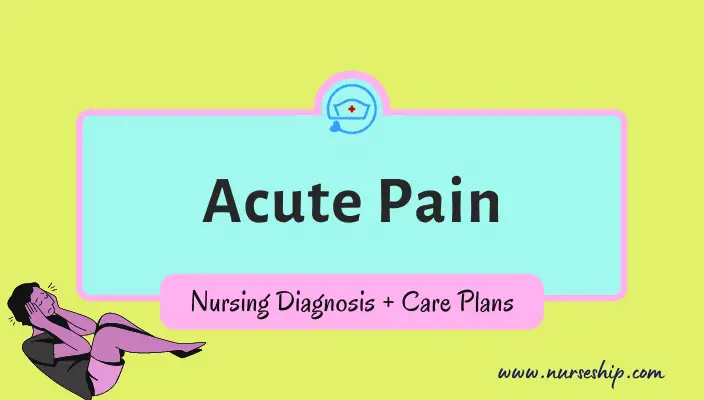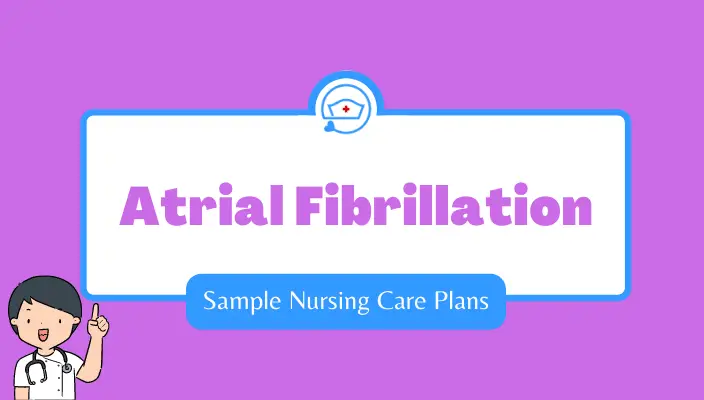Here we will formulate sample Myocardial Infarction (MI/ Heart Attack) nursing care plans based on a hypothetical case scenario.
It will include three Myocardial Infarction nursing care plans with NANDA nursing diagnoses, nursing assessment, expected outcome, and nursing interventions with rationales.
Myocardial Infarction (MI) Case Scenario
A 56-year old male presents to the ED with complaints of chest pain, shortness of breath, and nausea. The patient was watching TV when he started to experience what he thought was indigestion. The patient took an antacid but the pain quickly increased in intensity to 9/10 crushing chest pain.
When he started to feel nauseous and short of breath, he called an ambulance. The patient has a past medical history of hypertension, hyperlipidemia, and type 2 diabetes.
Upon assessment, the patient is diaphoretic and is visibly in pain. His temperature is 37.6 ˚C, heart rate is 95 beats per minute, blood pressure is 89/62 mmHg, respirations are 26 breaths per minute, and oxygen saturation is 96% on room air.
He is alert and oriented, his pulses are weak but palpable, and his capillary refill is greater than 3 seconds. The patient’s lung sounds are clear and a slight S3 murmur is heard when auscultating his heart.
Blood analysis reveals troponin of 35.2 ng/ml and CK-MB of 195 ng/mL. A stat 12-lead ECG is performed showing ST-elevation in leads II, III, and aVF and ST-depression in leads I, aVL, and aVR. A code STEMI is called.
The patient is admitted for an ST-Elevation Myocardial Infarction.
#1 Sample Myocardial Infarction (MI/ Heart Attack) Nursing Care Plan – Decreased cardiac output
Nursing Assessment
Subjective Data:
- The patient reports 9/10 crushing chest pain, shortness of breath, and nausea.
Objective Data:
- The patient is hypotensive.
- An S3 murmur is heard upon auscultation.
- The patient’s cardiac enzymes are elevated and ST-elevation is confirmed on 12-lead ECG.
Nursing Diagnosis
Decreased cardiac output related to inadequate blood supply as evidenced by chest pain, hypotension, elevated cardiac enzymes, and ST-elevation.
Goal/Desired Outcome
Short-term goal: By the end of the shift the patient will be pain-free and the cardiac enzymes will begin to trend downward.
Long-term goal: The patient will maintain a normal ejection fraction with no long-term myocardial tissue damage.
Nursing interventions with rationales for myocardial infarction (MI/ Heart Attack) – Decreased cardiac output
| Nursing Interventions | Rationales |
| Administer Aspirin 160-325 mg | Aspirin should be administered as soon as possible, ideally upon onset of chest pain or when EMS arrives. |
| Perform 12-lead ECG regularly and as needed for chest pain. | Frequent and regular 12-lead ECGs can monitor the progression of the STEMI and can detect a worsening in heart damage. |
| Prepare for immediate PCI or fibrinolysis. | PCI stands for percutaneous coronary intervention and is a non-surgical procedure that attempts to open up a blocked blood vessel in the heart with a stent. The goal is for a patient with a STEMI to receive a PCI within 90 minutes of arriving at the hospital – this is termed “door-to-balloon” time. A cardiologist may decide on thrombolysis instead, in which case the door-t0-needle goal is 30 minutes. |
| Monitor for bleeding at the insertion site post-PCI. | Bleeding from the insertion site is a risk post-PCI. For femoral sites, the patient generally remains flat for 4-6 hours, and for radial sites, a TR band or other similar hemostasis device remains in place for 1-2 hours. Monitor for bleeding, hematoma, or lack of perfusion. |
| If applicable, prepare for CABG. | If the occlusion is severe, widespread, or cannot be stented, a CABG (coronary artery bypass graft) may have to be performed. This is also known as open-heart surgery. |
| For patients in cardiogenic shock, prepare for IABP or Impella insertion. | An IABP (intra-aortic balloon pump) and an Impella are 2 types of temporary mechanical devices that support the heart and remain in place for hours to days. An IABP sits in the aorta and increases coronary artery perfusion and decreases afterload. An Impella generally sits in the left ventricle and assists in pumping blood, allowing the ventricle to rest. |
#2 Sample Myocardial Infarction (MI/ Heart Attack) Nursing Care Plan – Ineffective cardiac tissue perfusion
Nursing Assessment
Subjective Data:
- The patient reports 9/10 crushing chest pain and shortness of breath.
Objective Data:
- The patient is hypotensive.
- The patient’s pulses are weak and capillary refill is prolonged.
Nursing Diagnosis
Ineffective cardiac tissue perfusion related to myocardial tissue damage and cardiogenic shock as evidenced by chest pain, hypotension, and evidence of impaired perfusion.
Goal/Desired Outcome
Short-term goal: By the end of the shift the patient will be normotensive, with palpable pulses and brisk capillary refill.
Long-term goal: The patient will suffer no long-term organ damage from temporary poor perfusion.
Nursing interventions with rationales for myocardial infarction (MI/ Heart Attack) – Ineffective cardiac tissue perfusion
| Nursing Interventions | Rationales |
| Administer oxygen. | The patient should be placed on oxygen if SPO2 < 90% or if shortness of breath is present. |
| Maintain bedrest until stabilized. | Bedrest decreases myocardial oxygen demands. |
| Regularly assess the patient’s cardiac status, including heart rate, rhythm, presence of ectopy, capillary refill, pulses, or presence of murmurs. | Especially in the acute stage, a frequent and thorough cardiac assessment will help minimize complications of MI. |
| If indicated, prepare to insert a pulmonary artery catheter. | Although PA catheters are becoming less common, they are still used in the management of patients in cardiogenic shock and/or heart failure. PA catheters can provide pulmonary artery pressures, central venous pressures, wedge pressures, SvO2, and cardiac index and output which can guide the plan of care. |
#3 Sample Myocardial Infarction (MI/ Heart Attack) Nursing Care Plan – Acute Pain
Nursing Assessment
Subjective Data:
- The patient reports 9/10 crushing chest pain.
Objective Data:
- The patient is diaphoretic and visibly uncomfortable.
Nursing Diagnosis
Acute Pain related to myocardial tissue damage secondary to STEMI as evidenced by 9/10 crushing chest pain.
Goal/Desired Outcome
Short-term goal: The patient will report 0/10 chest pain by the end of the shift.
Long-term goal: The patient will be able to recognize the signs and symptoms of angina.
Nursing interventions with rationales for myocardial infarction (MI/ Heart Attack) – Acute pain
| Nursing Interventions | Rationales |
| Administer morphine for chest pain. | Morphine is the mainstay for patients experiencing chest pain because it decreases pain, heart rate, blood pressure, and anxiety, and may increase venous return. Respiratory status should be closely monitored. |
| Administer nitroglycerin for chest pain. | Nitroglycerin causes vasodilation and increased blood flow to the myocardium. It can be administered sublingually, intravenously, or topically. Blood pressure should be closely monitored as it can cause hypotension. |
| Administer ACE inhibitors and/or beta-blockers. | Given post-MI, these medications have been shown to improve heart function in the weeks to months following an MI. |
| Administer heparin. | Heparin is an anticoagulant that is frequently given post-MI to reduce the risk of recurrent infarction. Blood work should be closely monitored to achieve the appropriate level of anticoagulation. |
| Continue to trend troponin levels until peak. | Cardiac enzymes should continue to be monitored every 6 hours until they peak. |
Conclusion
To conclude, here we have formulated a scenario-based nursing care plan for Myocardial Infarction (MI/ Heart Attack). Prioritized nursing diagnosis includes acute pain, decreased cardiac tissue perfusion, and ineffective cardiac tissue perfusion.
Additionally, this simple myocardial infarction (MI/ Heart Attack)nursing care plan comprises nursing assessment, NANDA nursing diagnosis, goal, and interventions with rationales.
Recommended Readings & References
Ackley, B., Ladwig, G., Makic, M., Martinez-Kratz, M., & Zanotti, M. (2020). Nursing Diagnoses Handbook: An Evidence-based Guide to Planning Care (12th ed.). Elsevier.
Comer, S. and Sagel, B. (1998). CRITICAL CARE NURSING CARE PLANS. Skidmore-Roth Publications.
Herdman, T., Kamitsuru, S. & Lopes, C. (2021). NURSING DIAGNOSES: Definitions and Classifications 2021-2023 (12th ed.). Thieme.
Swearingen, P. (2016). ALL-IN-ONE CARE PLANNING RESOURCE (4th ed.). Elsevier/Mosby.
